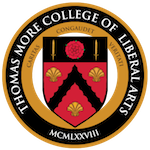For twenty-five years, Francisco Morales delivered milk to the lactarians of El Paso, Texas. This “Pancho,” who died in 1997 at the age of seventy-eight, was the father of the adult beverage known as the “margarita.” Milk and margaritas do not combine. Many of us as children learned the nursery adage, “contraria contrariis curantur“: the principle that opposites are cured by opposites, which is the foundation of allopathic medicine. Pancho was not an allopathicist. He may have become a milkman because our society, which overpays basketball stars and rock singers, makes no provision for the inventors of important drinks.
Crapulence proposes more coincidences than may in fact exist, but the real ones are fascinating enough. Take the case, as it were, of the suffragette president of Byrn Mawr College, M. Carey Thomas. Her name was Martha but she disdained its docile connotations. A respected scholar and administrator mighty in her bulwarks, she was a lapsed Quaker, although it is not clear how that is determined. Dr. Thomas was not related to Andre Antoine Thomas, the philologist who co-authored the Dictionnaire General de la Langue Francaise, but both were born in 1857, and died in 1935 at the same age as Pancho Morales, who himself died on the 50th anniversary of the death of Wayne Bidwell Wheeler, general counsel of the Anti-Saloon League and author of the prohibitionist Volstead Act. In their birth-year, another Thomas, called Jerry, a bartender in San Francisco, invented the “martini,” which he named for the town of Martinez in California.
Andre Antoine Thomas probably kept to wine, and there is no record of M. Carey Thomas tasting one of Jerry Thomas’s inventions, although many around her must have. One thing we do know, and its symmetry is compelling: As the year of the birth of the two academic Thomases saw the birth of the martini, the year of their death launched, on June 10, Alcoholics Anonymous.
Konigsburg beer has become popular in the United States even among many people who have no interest in Immanuel Kant. That hydropot philosopher of strict habits was born in Konigsburg in 1724 and died there in 1804 as U.S. Federal District Judge John Pickering was being convicted of drunkenness and profanity. Precisely 110 years later, the British destroyed a German cruiser in Rufiji River in German East Africa, which vessel was named for Kant’s city and was laden with quantities of its beer.
She sank nineteen years after the Anti-Saloon League was founded, which was also the date (December 17, 1895) on which President Grover Cleveland proposed a toast to a commission that fixed a boundary between Venezuela and British Guiana. The Anti-Saloon League was a more dour version of the Total Abstinence Society founded by Capuchin priest from Tipperary, Theobold Mathew (1790-1856). Bishop John Hughes of New York sniffed heresy in the very name Total Abstinence. Besides Mathew’s work among the Irish, this thaumaturge pledged nearly 100,000 Scotsman to sobriety and then went to America, where in 1849 he gave the pledge to President Polk, whom Sam Houston would call a victim of the use of water as a beverage.
Older than the first Konigsburg brewery is the Spatenburg brewery of Munich, where monks began producing malt beer in 1397. In the same year at Calais, King Richard II executed the Duke of Gloucester. Five hundred and forty years later, the unforgivably sober Prime Minister Neville Chamberlain signed the Munich Agreement, with the approbation of King George VI who was benevolent toward the Duke of Gloucester, Henry, in spite of the Duke’s eccentric refusal to use ashtrays for his cigars during cocktail hours.
Rudely enough toward one of their collateral antecedents, a drink has been dubbed “Bloody Mary.” This perpetuates an extravagant prejudice, but it is some sort of tribute to the vitality of her religion. No one would think of calling a cocktail the “Westminster Confession” or an aperitif an “Albigensian.” A basic instinct stays the imagination from nicknaming a cordial for John Calvin. It says something valiant for the religion of Mary Tudor, that Champagne and Chartreuse and Benedictine were the inventions of Dom Perignon (1638-1715) and other monks pursuing a life of perfection. Hennessey brandy was the inestimable benefaction of an Irish Catholic emigre to France. So too was Haut Brion claret which was spelled “Ho Bryen” by Samuel Pepys (1633-1703), whose foremost biographer, in example of contraria contrariis curantur, was John Drinkwater (1812-1937).

